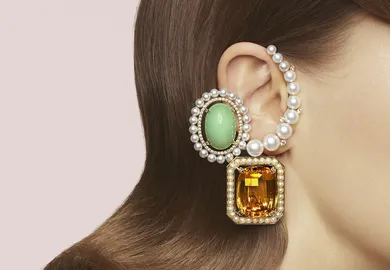

Pearls of Wisdom: The Art of Shopping for Pearl Jewellery
Have you ever been perplexed about a beautiful strand of South Sea pearls or paused at the checkout for a lustrous Akoya pearl ring? Shopping for pearl jewellery can feel like a complex task, especially as there are many different types, qualities and styles to consider. Here, Peggy Grozs, senior vice president of Assael, helps us piece together a guide to pearl shopping and explains the important quality factors to consider, specifically lustre, surface, size and shape.
If aesthetics and style are the cover of a jewel’s book, then the quality of the materials it is crafted with are the chapters, bursting with information, characters and origin stories. Pearls have the power to immediately draw us in, whether they’re contained to a single strand or set in high jewellery creations. But when it comes to making informed purchasing decisions, it’s important to look a little deeper and question the quality of the pearls used, not just their visual appeal.
This story is available to Katerina Perez Club members.
Monthly access
Unlock Club features
£15/month
Billed monthly. Cancel anytime*
Annual acces
Unlock Club Features
and save 13% on membership
£13/month
Billed annualy. Cancel any time*
All Membership Features
- Access to exclusive articles
- Daily bite-size news in Jewellery Chronicles
- Jewellery Calendar of events across the globe
- Curated list of articles from 50 other platforms
- Invites to online and offline KP Club events
- Receive Monthly Newsletter
- Save articles and Images into favourites
Already have an Account?

Pearls of Wisdom: The Art of Shopping for Pearl Jewellery
Have you ever been perplexed about a beautiful strand of South Sea pearls or paused at the checkout for a lustrous Akoya pearl ring? Shopping for pearl jewellery can feel like a complex task, especially as there are many different types, qualities and styles to consider. Here, Peggy Grozs, senior vice president of Assael, helps us piece together a guide to pearl shopping and explains the important quality factors to consider, specifically lustre, surface, size and shape.
If aesthetics and style are the cover of a jewel’s book, then the quality of the materials it is crafted with are the chapters, bursting with information, characters and origin stories. Pearls have the power to immediately draw us in, whether they’re contained to a single strand or set in high jewellery creations. But when it comes to making informed purchasing decisions, it’s important to look a little deeper and question the quality of the pearls used, not just their visual appeal.
This story is available to Katerina Perez Club members.
Monthly access
Unlock Club features
£15/month
Billed monthly. Cancel anytime*
Annual acces
Unlock Club Features
and save 13% on membership
£13/month
Billed annualy. Cancel any time*
All Membership Features
- Access to exclusive articles
- Daily bite-size news in Jewellery Chronicles
- Jewellery Calendar of events across the globe
- Curated list of articles from 50 other platforms
- Invites to online and offline KP Club events
- Receive Monthly Newsletter
- Save articles and Images into favourites
Already have an Account?








